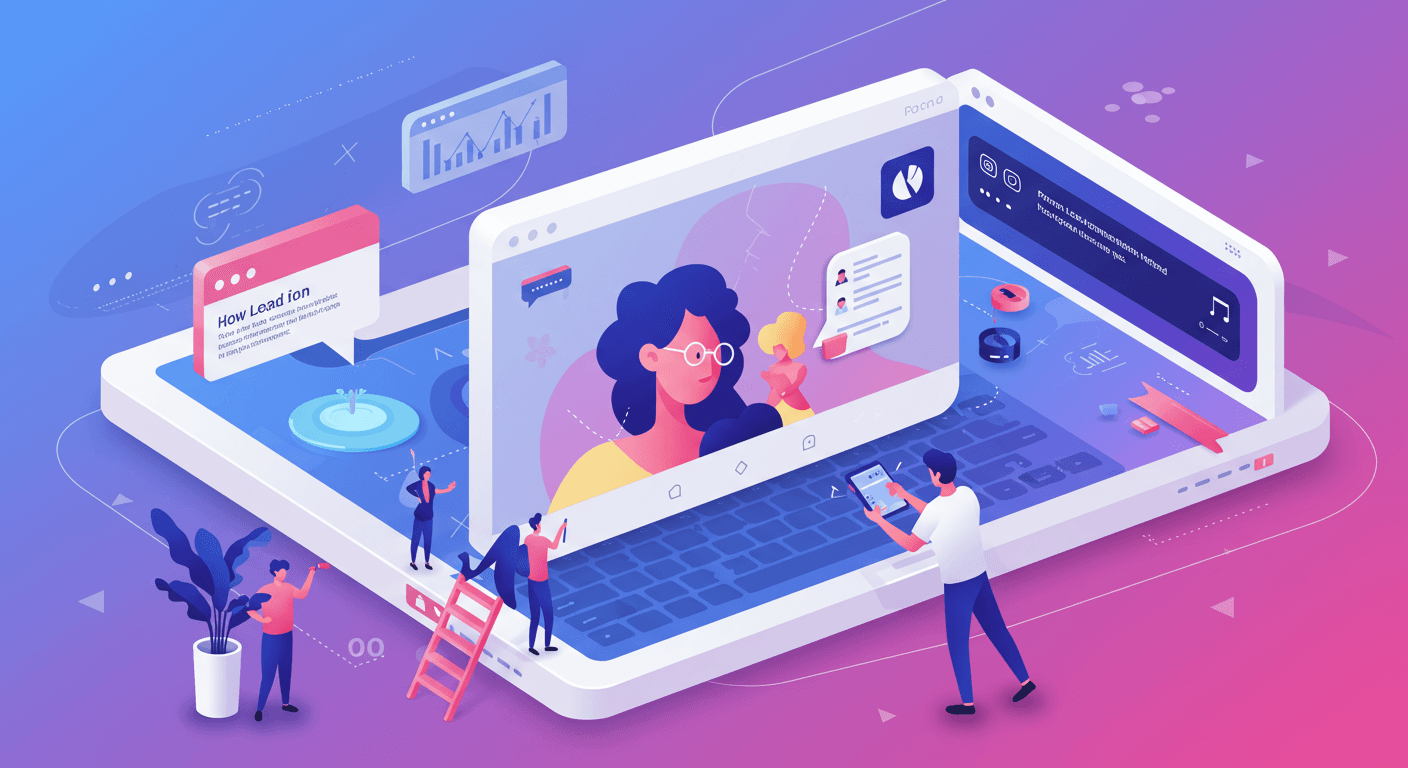Have you ever felt like your online activity is being watched? Targeted ads popping up that are a little too relevant?
It's understandable to feel that way. With growing concerns about data privacy, many customers are actively opting out of third-party tracking. This shift makes it harder to understand your audience using traditional methods, and that’s where betterfeedback.ai comes in.
Forget outdated practices! The future of marketing lies in nurturing genuine connections through personalized experiences, all driven by first-party data.
In this blog post, we will walk through how to create personalized marketing content by leveraging first-party data. We'll explore:
- What first-party data is and why it's crucial.
- Strategies for leveraging first-party data for marketing personalization with betterfeedback.ai.
- Types of first-party data to prioritize.
- Real-world scenarios where first-party data can make a significant impact.
First-Party Data: The Foundation of Authentic Connection
First-party data is the information you collect directly from your customers, users and leads, and it's like gold. It comes from various sources:
- Your website analytics
- Mobile apps
- Customer support interactions
- Social media engagement
- And more
Unlike third-party data, which can be unreliable and raise privacy concerns, first-party data is trustworthy and provides valuable insights into your audience's behaviors and preferences.
Some might think of first-party data as similar to zero-party data, but there are key differences. Zero-party data is explicitly shared by customers, like preferences they select directly. First-party data encompasses a broader range, including observed behaviors, which can complement zero-party data to create a richer customer understanding.
Elevate Your Marketing with First-Party Data-Driven Personalization
Modern customers expect personalization. Generic marketing simply doesn't cut it anymore. With first-party data, you can craft tailored experiences that resonate with your audience, making them feel understood and valued.
Imagine a scenario: A customer purchases a premium coffee blend from your online store. Instead of a generic thank you, they receive a personalized email with:
- Their name
- A thank you for purchasing that specific coffee blend
- Suggestions for brewing methods that pair well with the coffee's flavor profile
- A discount code for a complementary item, like a specialized coffee grinder.
This level of personalization shows the customer you understand their interests and preferences, making them more likely to become a loyal customer.
betterfeedback.ai lets you tie everything together to follow the customer journey. This can help you identify the customer that purchased the coffee, along with other touch points:
- Website behavior
- Chatbot interactions
- Form submissions
Unlocking the Potential of First-Party Data Sources
The specific first-party data you collect will vary depending on your business. Here are some common sources and how you can leverage them:
- Website Analytics: Utilize tools like Google Analytics combined with betterfeedback.ai to track user behavior, identify popular content, and optimize the user experience.
- In-App Behavior: Track how users interact with your app or platform to provide personalized recommendations, educational content, and targeted messaging.
- Purchase History: Analyze purchase patterns to offer relevant cross-selling and upselling opportunities, personalized recommendations, and targeted discounts.
- Customer Support Interactions: Use insights from customer support interactions to identify common issues, improve product development, and create helpful self-service resources.
- Social Media Interactions: Monitor social media engagement to understand customer sentiment, identify trending topics, and refine your content strategy.
How to Collect First-Party Data
Collecting first-party data requires a strategic approach. Here's how to get started:
- Audit Your Current Practices: Analyze your current data collection methods and identify areas where you can gather more first-party data.
- Implement Website Analytics: Utilize a web analytics platform like betterfeedback.ai to track visitor behavior, traffic sources, and conversion rates.
- Integrate Data Collection Platforms: Connect your data collection platforms with a customer data platform (CDP) for a holistic view of your customers.
- Prioritize Compliance: Always obtain explicit consent from users before collecting their data and adhere to data privacy regulations.
B2B First-Party Data Strategies
First-party data isn't just for B2C companies. B2B businesses can also benefit from its power. However, B2B companies often have longer sales cycles and multiple decision-makers involved. Instead of focusing solely on individual data, B2B marketers should emphasize account-based data collection. Understand the different stakeholders within an account and their relationships to tailor your marketing efforts effectively.
First-Party Data in Action
Here are a few scenarios where first-party data can drive impactful results:
- E-commerce: E-commerce businesses use purchase history and browsing behavior to create personalized product recommendations and targeted email campaigns.
- Content Publishers: Content publishers use data on user interests and content preferences to deliver personalized content recommendations and optimize content strategies.
- SaaS Companies: SaaS companies leverage user behavior within their products and customer support interactions to improve user onboarding and develop targeted upsell campaigns.
- Hospitality Industry: Hotels and restaurants use data from loyalty programs and booking history to create personalized offers and tailored experiences, leading to increased customer satisfaction and loyalty.
Personalization with Surveys
At betterfeedback.ai, we understand the value of personalization. That's why our platform is built to tailor experiences to each individual. For example, you can leverage the platform's logic features to:
- Use a respondent's name within the survey.
- Recall previous answers to create a seamless experience.
- Skip irrelevant questions based on prior responses.
- Show personalized thank you pages.
Transforming Customer Relationships with Personalization
In today's marketing landscape, trust is paramount. By integrating first-party data into your marketing strategy, you create genuine connections with your audience. This leads to increased sales, stronger customer loyalty, and long-term business growth.
Ready to unlock the power of first-party data? Explore betterfeedback.ai today to begin creating personalized experiences that resonate with your audience.



